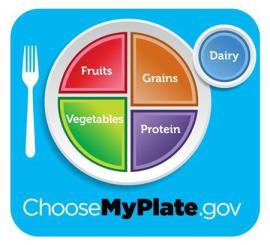 Food trends can be a lot like fashion trends: often fickle and short-lived. But there is one aisle in the supermarket that not only stands the test of time, but also revolutionizes the American diet with its new products. That’s right; the dairy aisle!
Food trends can be a lot like fashion trends: often fickle and short-lived. But there is one aisle in the supermarket that not only stands the test of time, but also revolutionizes the American diet with its new products. That’s right; the dairy aisle!
Tummy Time: Probiotics and Fiber
Probiotics are the “good bugs” that help fight off bad bacteria in our digestive tracts, and are found in more than just yogurt. You can find cultured milk smoothies, probiotic-enhanced yogurts and yogurt smoothies, and even a few varieties of cottage cheese with added probiotics.
When it comes to fiber, we expect to get that from grains and produce. But dairy too? It turns out that soluble fiber can be easily added to yogurts and yogurt smoothies to create an easy way to sneak more fiber into our diets. And since most Americans don’t meet recommended fiber needs (25 grams per day for women, 38 grams per day for men), every bit of extra fiber helps.
The Greek Revolution
It’s no secret that Greek yogurt is gaining in popularity! Besides its creamy texture and yummy tangy taste, most Greek yogurt contains double the protein of regular yogurt. Look for low-fat and fat-free Greek yogurt for a quick breakfast or snack. You can even use plain fat-free Greek yogurt in place of sour cream and mayonnaise in recipes, making it your secret weapon for low-calorie home cooking!
Love for the Lactose-Intolerant
You will also find a larger variety of lactose-free dairy products available in your supermarket! If you are lactose intolerant, but haven’t tried a lactose-free milk, now’s the time – you’re missing out on a great tasting milk, as well as calcium, vitamin D and potassium your body needs! Choose 3 servings of lactose-free dairy daily.
Portioned and Ready to Go
Many dairy brands are now packing their products in one-portion sized containers, making milk, yogurt, smoothies and even cottage cheese perfect foods to grab when you are on the go!
**Guest blog by Monica Amburn.
 Monica Amburn is a registered dietitian and the consumer wellness manager for BI-LO and Winn-Dixie supermarkets. In this role, she is responsible for implementing in-store educational and promotional nutritional programs for consumers in eight southeastern states. Monica’s professional background also includes fitness, medical nutrition therapy and weight management counseling. She is an active member of the Academy of Nutrition and Dietetics, South Carolina Academy of Nutrition and Dietetics, and is the 2012-2013 president of the Piedmont District Dietetic Association in South Carolina. Monica received her Bachelor of Science degree in Foods and Nutrition from Radford University in Radford, VA. Monica also completed her dietetic internship at Radford University, and has been a practicing registered dietitian since 2004.
Monica Amburn is a registered dietitian and the consumer wellness manager for BI-LO and Winn-Dixie supermarkets. In this role, she is responsible for implementing in-store educational and promotional nutritional programs for consumers in eight southeastern states. Monica’s professional background also includes fitness, medical nutrition therapy and weight management counseling. She is an active member of the Academy of Nutrition and Dietetics, South Carolina Academy of Nutrition and Dietetics, and is the 2012-2013 president of the Piedmont District Dietetic Association in South Carolina. Monica received her Bachelor of Science degree in Foods and Nutrition from Radford University in Radford, VA. Monica also completed her dietetic internship at Radford University, and has been a practicing registered dietitian since 2004.








